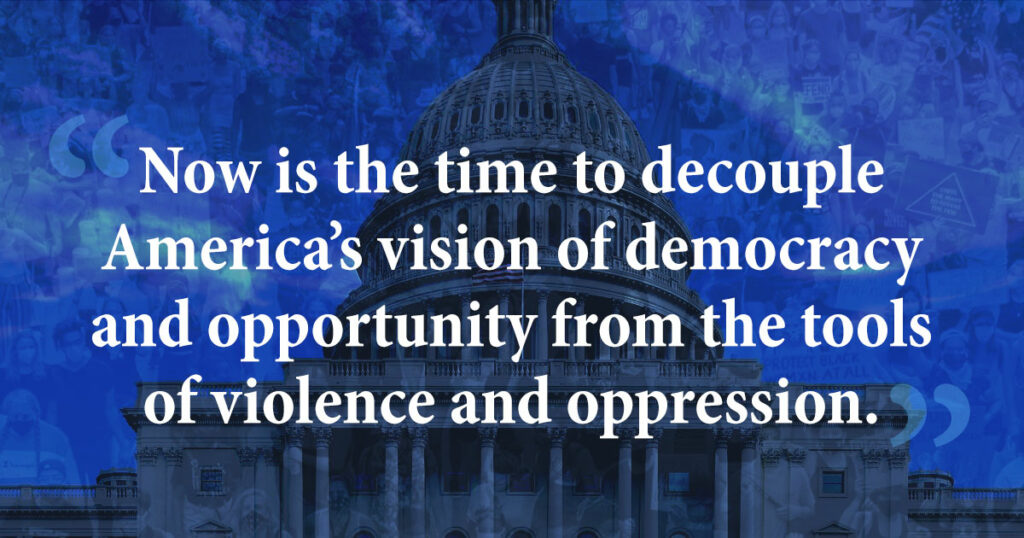News
The Time for a Federal Racial Equity Stimulus Package is Now

 This abridged op-ed was originally published in The Grio. Click here to read the full essay.
This abridged op-ed was originally published in The Grio. Click here to read the full essay.
The story of America is the power of common people coming together around a vision of opportunity, democracy, and a better way of life for generations to come. However, from our earliest beginnings, that vision was executed with instruments of brutal and legalized oppression, heavily fueled by racial bias, which for centuries has metastasized through every system of American life: healthcare, education, employment, policing, faith, technology, and infrastructure.
Over the past several years, the Schott Foundation’s Loving Cities Index has documented the racial disparities in support for children in families in major cities across the country. The link between structural racism and the opportunity for children of color to learn and thrive is so interwoven that aggressively reducing racial disparities is the clearest pathway to ensuring their educational opportunities, social mobility, and democratic participation for generations to come.
Out of the urgent need to decouple America’s vision of opportunity from America’s historic systemic racism and oppression, this moment calls for Congress to advance a multi-year, $10-12 trillion federal racial equity stimulus package focused on investments in states, urban, rural, and tribal communities, and most importantly in our people as a new reconstruction investment in building one America. This bold fiscal effort could only be aided by a Cabinet-level advisor to the president on racial justice, equity and advancement, a recent proposal made by the NAACP and other civil rights groups.
Four major events in our nation’s history immensely increased America’s wealth but equally imposed a system of racism on generations to come:
- the genocide and forced relocation of Native Americans
- the slave trade, which began in 1619 and continued to 1865
- the 1848 Mexican Cession of Land following the Mexican-American War
- federal policies like segregation and redlining that locked Black people out of the benefits of the New Deal
These events were essentially down payments on the wealth and growth of the nation. Yet, the people who were the victims of this oppression have never been re-centered in the national vision.
While these events were pivotal, other laws and practices also undergirded centuries of systemic racism, including: it was a crime for slaves to learn to read and write; the U.S. Constitution considered enslaved people as three-fifths human until 1868; Plessy v. Ferguson ruled that separate but equal schools and accommodations were constitutional; the war on drugs and sentencing vastly increased the number of Black people incarcerated for non-violent offenses. Simply stated, racism and oppression have been the operating system in America based on whiteness as the dominant power structure.
Though many of these acts were implemented centuries ago, evidence of their impact is all around us. Consider this: white, non-Hispanics make up 60% of the U.S. population, and yet:The ten richest Americans are 100 percent white and the U.S. Congress is 78 percent white.
These and many other abnormal statistical outcomes are clear evidence that America has not achieved a system where there is a fair opportunity to succeed regardless of race. To the contrary, both qualitative and quantitative data clearly indicate success and failure are too often predetermined by race. You don’t get heavily slanted, racially identifiable outcomes without the preferential treatment and head start that whiteness was given from America’s early beginnings.
Systemic racism has been braided in America’s history and growth, but it is not a problem that is insurmountable or unsolvable. There is nothing wrong with our nation that eliminating systemic racism won’t fix. Systemic racism, which creates outcomes that are racially identifiable, can be weakened, unraveled, and eliminated. We can achieve a time when our children’s success or failure can no longer be predicted by race.
There is Precedent
From the 1950s through the 1970s, the U.S. began to use the legal lever to tackle systemic racism and its disparities with the passage of Brown v. Board of Education, the Civil Rights Act, Voting Rights Act, fair housing laws, etc. While none of these policies completely eliminated disparities, they helped address some inequities impacting Black children and families.
It is undeniable that we have seen progress in the presence of Black people in political and corporate offices, yet while diversity and inclusion are essential, adding Black presence doesn’t on its own change how the system operates any more than adding an app on a phone changes the phone’s operating system. The presence and perspective of people of color definitely brings value in that they are more likely to question the operating system, force needed updates, etc. However, including people of color without dedicating critical resources to rebuild the operating system is ineffective. To put it bluntly, 60 years of under-resourced and disjointed progress is insufficient to remedy over 400 years of oppression.
So how do we stimulate progress closing racial disparities and change America’s operating system? The same way we stimulate growth in our economy through laws and fiscal policies: specifically, through a targeted stimulus package that allows us to fix glitches, invest in under-resourced areas, and fundamentally change our operating system for a better future for children and our country.
Why a Racial Equity Stimulus Package?
Today most of the systems that have undergirded systemic racism in the U.S. have been severely weakened by COVID-19 and disrupted by those demanding change after the countless murders of Black people like Breonna Taylor and George Floyd. These events have dramatically cracked America’s foundation. The choice before us is whether we do patch work on our old system or use fiscal policy to seize the opportunity to build a stronger foundation.
We need to construct a new imagination where opportunity and democracy have been intentionally uncoupled from brutal oppression and where the concept of belonging is explicitly uncoupled from whiteness.
Through my 20 years of experience working in government, community organizing, and philanthropy to improve our education system and address education disparities, I am confident that it is virtually impossible to provide Black and brown children a fair opportunity to achieve their full potential without significantly addressing the broader systemic inequities. As data shows, racial inequities in access to healthcare, affordable housing, and healthy food make as much (if not more) of an impact on Black and brown students’ educational outcomes than the education factors themselves. These inequities more pervasively impact students of color, but they impact all students while undermining our democracy, economy, and humanity.
A multi-year, $10-12 trillion federal Racial Equity Stimulus Package is needed to make significant investments in our states, urban, rural, and tribal communities, and most importantly in historically under-supported American children and families. The stimulus package should be designed to kickstart progress where disparities have been most pronounced. Specifically, policymakers should start in several key areas:
- Stimulate and Liberate Learning for all through significant investments from birth and throughout the public pre-K12 education system, as well as free community college, and significant investments in HBCUs and other minority-serving institutions.
- Stimulate the Closure of Wealth Gaps through increasing home ownership, small business investments, and capital in Black banks and other financial institutions which more often invest in communities and people of color.
- Stimulate the Reduction of Criminal Justice Disparities, significant state and local community infrastructure investments in job training and placement, judicial system reforms, and community infrastructure projects including investments in community organizing institutions.
- Stimulate the Well-Being of America’s Families and People by guaranteeing access to healthcare, eliminating education debt, and investing in family leave.
The U.S. has relied on similar fiscal packages for everything except the existential crisis that is the stain of genocide, slavery, and forced relocation.
Now is the right time to take these steps. The U.S. economy is roughly $22 trillion. Strategically investing $10-12 trillion over the next over five years would mean a fiscal shot of about 10 percent of total economic activity over that period. The investment will increase U.S. debt, but current interest rates are lower than the expected rate of inflation, thus the federal government can borrow money for free. Furthermore, the W.K. Kellogg Foundation’s report, “The Business Case for Racial Equity: A Strategy for Growth,” documents the significant economic upside of investments to achieve racial equity: the U.S. economy could gain $8 trillion in GDP by 2050 if the country eliminated racial disparities in health, education, incarceration, and employment. That gain would be equivalent to a continuous boost in GDP growth of 0.5 percent per year, increasing the competitiveness of the country for decades to come.
This nationwide effort must be led by federal policy. Though some individual cities have taken steps towards reparations policies (a broader approach than a fiscal stimulus package), local efforts lack the resources and momentum to change their states, let alone our country’s operating system. It must be a national goal.
Rather than seeing a multi-trillion dollar relief package as too large, we should see it as a more than appropriate response to reverse the effects of centuries of systemic racism holding back the potential of people of color, thus holding back our country.
Now is the time to decouple America’s vision of democracy and opportunity from the tools of violence and oppression. Use the wealth created on the backs of those most oppressed to finally help America heal and launch future generations of Americans on a course to exist without the present pain and encumbrance of systemic racism. A new American Reconstruction is in order. It is time for our children’s generation—whose ancestors’ bodies were sacrificed for America’s down payment on wealth and democracy—to participate fully in America’s promise and truly call America their home.
Dr. John H. Jackson is President and CEO of the Schott Foundation for Public Education. In this role, Dr. Jackson leads the Foundation’s efforts to ensure a fair and substantive opportunity to learn for all students regardless of race or gender. Dr. Jackson joined the Schott Foundation after serving in several senior-level positions. Among them was, National Director of Education and Chief Policy Officer of the National Association for the Advancement of Colored People (NAACP) from 2000-2007. Following the Schott Foundation on Twitter: @schottfound



